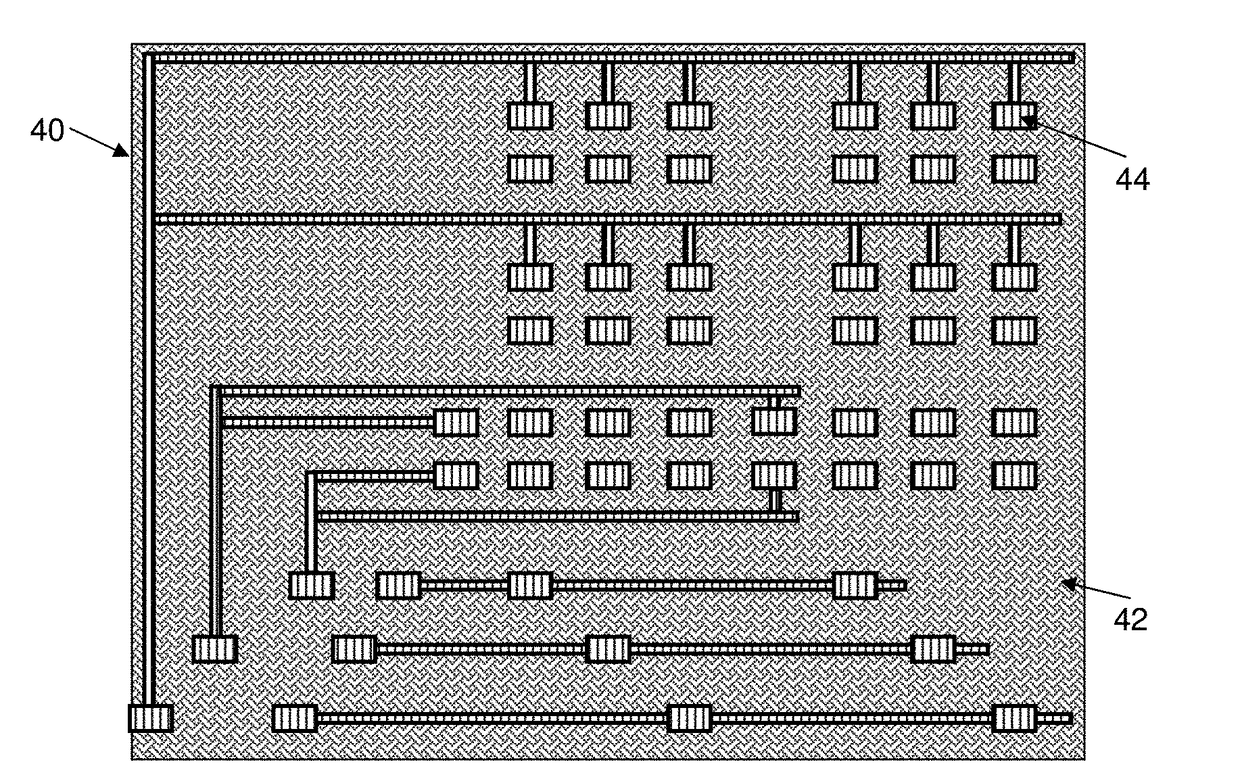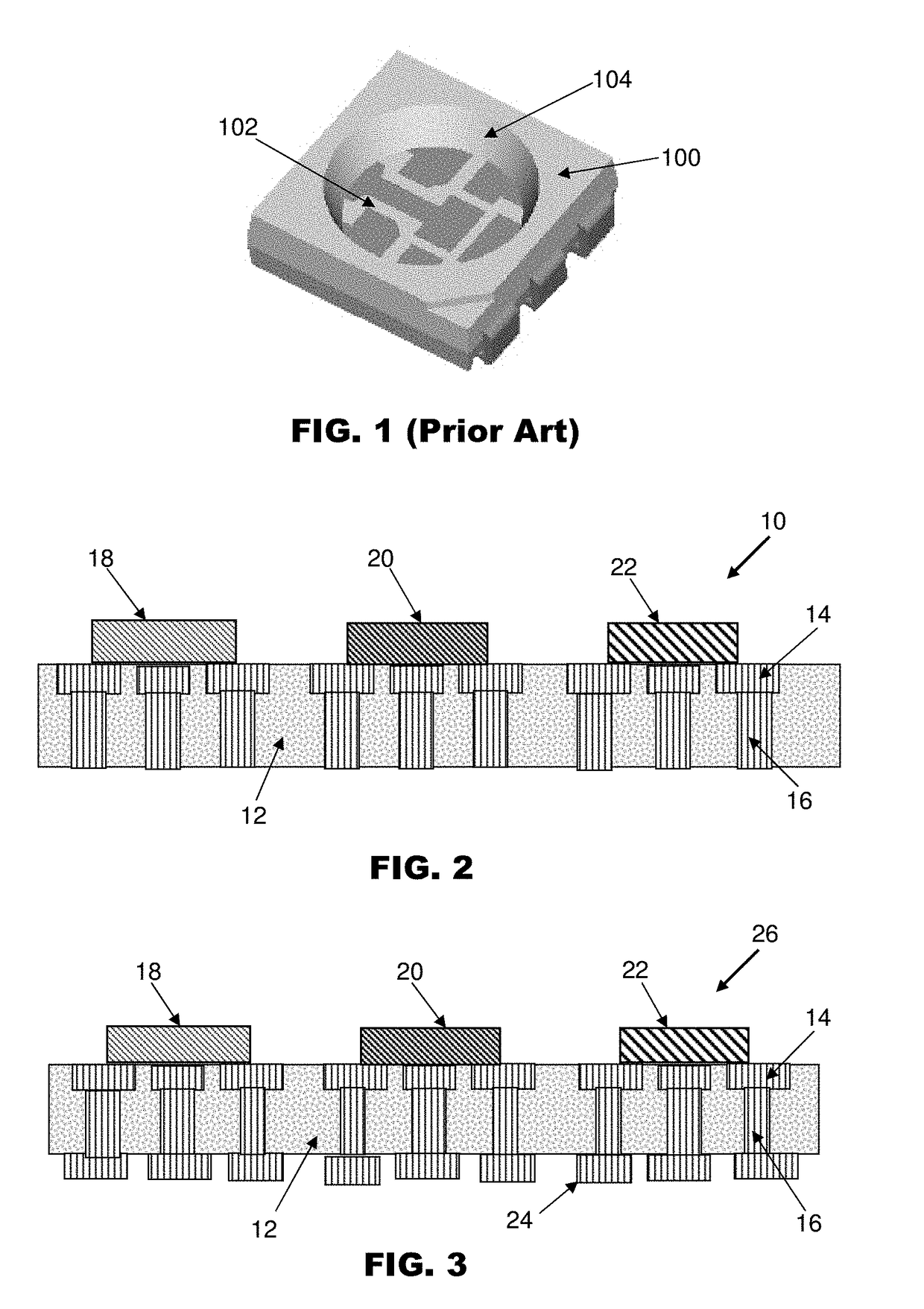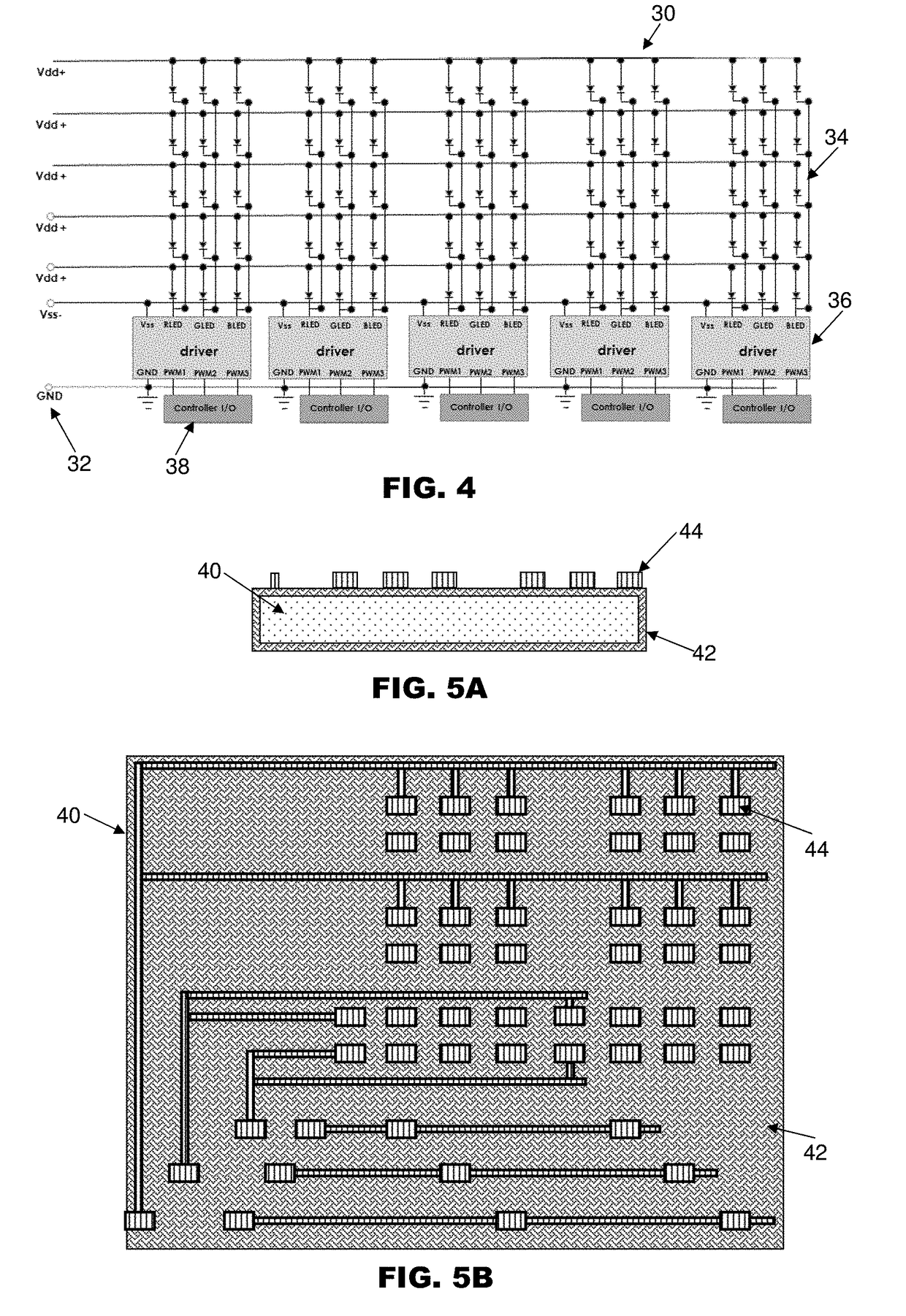Display panel fabricated on a routable substrate
- Summary
- Abstract
- Description
- Claims
- Application Information
AI Technical Summary
Benefits of technology
Problems solved by technology
Method used
Image
Examples
Embodiment Construction
[0021]FIG. 2 is a schematic illustration of a routable substrate 10 on which LED dice 18, 20, 22 are mounted for forming an LED display panel. The substrate 10 is able to facilitate fine pitch flip chip mounting of LED dice or standard wire-bonding of the LED dice to form electrical connections between the LED dice and the substrate 10. The substrate 10 is generally made up of a dielectric encapsulant 12 that acts as a carrier. The encapsulant 12 may be in the form of an insulating molding compound having high thermal conductivity, and may comprise epoxy resin and silica-based fillers. The encapsulant 12 should preferably have a low modulus of elasticity that allows flexibility and bendability. The encapsulant 12 should preferably be black in color to provide better LED pixel contrast for use in the LED display panel. The encapsulant 12 should also be susceptible to grinding so as to reduce the thickness of the substrate down to 70 microns in thickness for addressing thinner LED pac...
PUM
 Login to View More
Login to View More Abstract
Description
Claims
Application Information
 Login to View More
Login to View More - R&D
- Intellectual Property
- Life Sciences
- Materials
- Tech Scout
- Unparalleled Data Quality
- Higher Quality Content
- 60% Fewer Hallucinations
Browse by: Latest US Patents, China's latest patents, Technical Efficacy Thesaurus, Application Domain, Technology Topic, Popular Technical Reports.
© 2025 PatSnap. All rights reserved.Legal|Privacy policy|Modern Slavery Act Transparency Statement|Sitemap|About US| Contact US: help@patsnap.com



